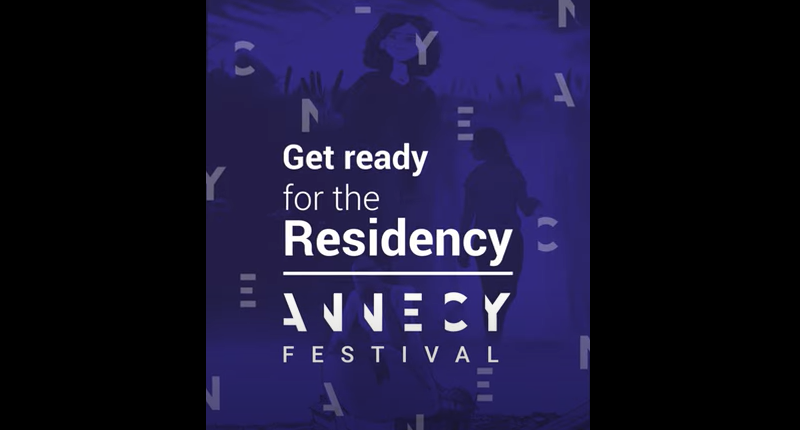
India is replete with talents in the field of Animation who are making a mark on the global canvas almost everyday and making the industry proud. Kolkata based Ghost Animation co-founder and Annecy award-winning director Upamanyu Bhattacharyya (for Wade) is now the only Indian among the three filmmakers participating in the Annecy Residency Programme 2021 for his animated feature, Heirloom.
AnimationXpress had the pleasure of speaking with Annecy Residency in-charge and MIFA head of project Géraldine Baché as well as Bhattacharyya on the vision behind the programme and the film. Read on:
What is the vision/ thought behind the residency program?
Baché: Being in charge of the residency project as well MIFA from the last 10 years, I have been working with MIFA head Michael Connus and CEO Michael Maha. While working with authors and artists in residency, I asked my CEO to think about a programme where we would invite great local talents from all over the world. When Maha became the new CEO in 2018, he really wanted to carry the new project and he had it in mind, it took shape as a part of his establishment project.

We made a market study to see what already existed and what was missing in the particular fronts and decided to position the residency on feature films because Annecy has already decided to support these industries for the past 10 years so it’s quite obvious to focus on these formats for Residency. We also decided to support the graphic development of the projects because we think it allows the director to make important choices before going into production. So, through this residency, we wish to offer time to the artists to allow them to benefit from our network and our experience to help in their projects. This was the vision behind the first edition.
Are you considering any other formats of animation for the Residency Programme?
Baché: For the first edition, we’re only considering animated features. Depending on how it will evolve in the future, we will open it to a new format such as animated shorts, TV series, and so on.
What was the process of shortlisting these features?
Baché: We launched a code for application last June [2020] just before the festival. The applicants who meet the project criteria could submit their projects until the end of August 2020. For this edition, we received more than 30 projects that we shared with a committee of professional writers, directors, producers, and distributors. Each project was considered from an artistic point of view, but also taking in its feasibility on an international scale. It was very important for us to have both the things in mind so that we can invite the project we really believe in but not only because we like it artistically but also we think that definitely, we can find a partner for them during the festival and MIFA.
From Wade to Heirloom, how has the journey been?
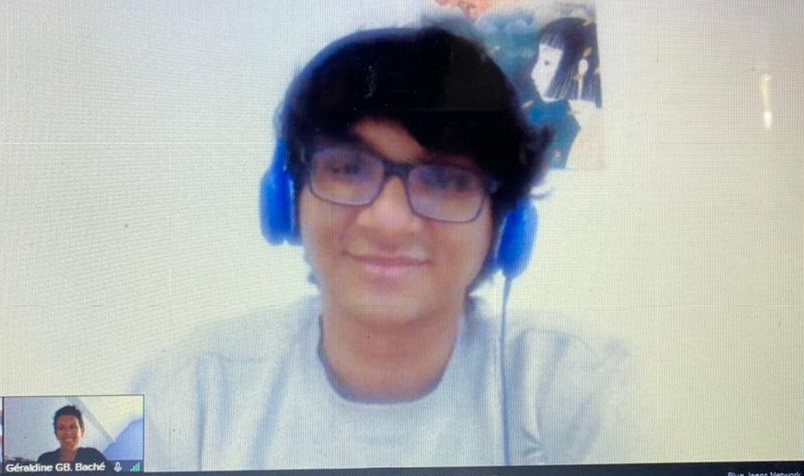
Bhattacharyya: It was a relatively fast journey because as soon as Wade was in festivals, we were wondering what to do next and it really coincided that the film would screen at Annecy and we also received the call for a project within the next couple of months. When I had a look at the programme it was a particularly good idea to start condensing all the thoughts that I had for potential feature projects. Heirloom was something that was in my mind for a very long time but not committed to treatment, characters and an actual script, as the Residency had a big list of requirements for the project. So it was a very good reason to at least put together everything for that purpose and see how it fed, to my mind if the residency worked out. So I could build a schedule around it for a planned pursuit.
How is a feature different from making animated shorts and music videos?
Bhattacharyya: Everything is different, especially in terms of the scale, and a feature is more inclusive in the kind of help you will need. There’s a lot of things in short films that you can do yourself, even seasonally in isolation by just disappearing for a while. But, with the feature, that same experience isn’t compatible as you do need help. You need other talented people on board, so you need more planning. You need to make sure that no one’s wasting any time; they know exactly what they’re doing, and how much time they’re expected to give? Because it’s just a very large chunk of time given by a lot of people. So, I think the responsibility mainly is what components on a feature-length project because you have to tell everyone exactly what they’re signing up for, and make sure no one’s kind of left hanging. As a director, you [in this case me] ensures that everybody understands the vision of the film and they want to help it happen. So it’s a lot more in terms of articulation in communication.
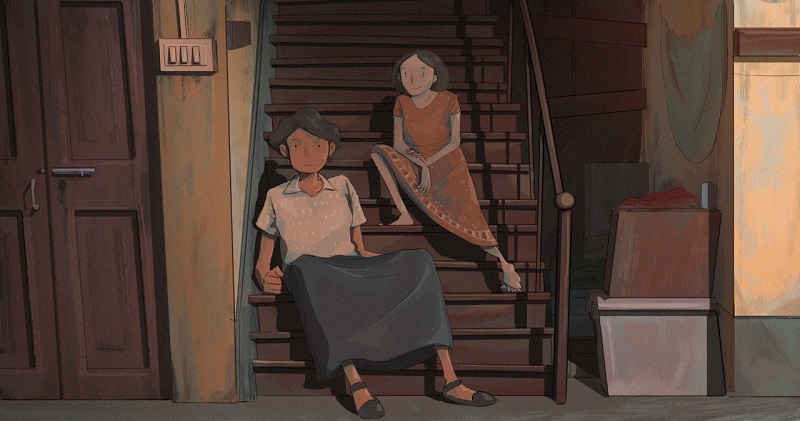
What is the current status of the project? Are you getting help from your colleagues at Ghost animation, or are you doing it single-handedly?
Bhattacharyya: It’s still very much in pre-production in the sense that until actual animation for the film hasn’t started. It’s in continuum and I’ve had very good inputs from the mentorship presence over here. For Heirloom, the mentor is Reza, he is a very talented filmmaker and artist himself and he’s worked on feature-length projects as art director too. He’s brought a lot of experience to the table and helped restore it to a more focused action.
Besides the development, I’m doing some concept art along with people who have previously worked on Ghost projects as well as an army of animators. We have some character designs ready and we need to see how they move, what kind of frame rate they’ll have and to what extent where stylizing the person to all of these things are kind of happening, while we focus on the character the most and put it on the background design.
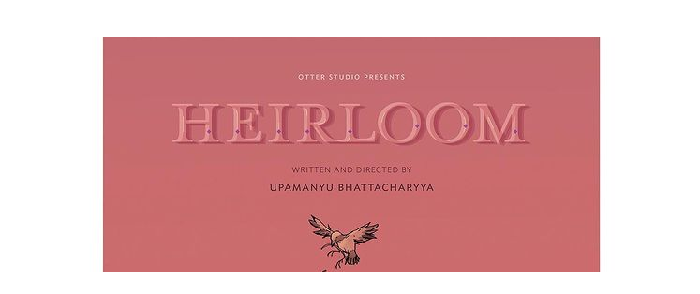
Heirloom is set in Ahmedabad and the released images show a mystic, periodical aura to it. What was the inspiration behind this animated feature film?
Bhattacharyya: The main inspiration is the five and a half years that I spent in Ahmedabad, the Manchester of India as they call it and in NID in particular because you are directly exposed to a lot of textile heritage. Even in the modern age of computers, they have to spin the thread of handloom cotton which is very interesting. So, they have this thin bit of cotton and they have to feed that thread into a handloom, set up the whole millennia which is very interesting too. The city also has a lot of textile museums, museum of kites as well, friendship, emotions, variety and nuances. There is in each of these things. And, of course, the city itself. Roaming around the world city and seeing this very living Heritage, sort of fascinated me. A lot of that Heritage is intact as is right now, as it was about 200 years ago. I had a plan also to make a film that’s set in The Old City, and something to do with fabric. It had to do something with the family in the old city. And Ahmedabad itself was also the epicenter for a lot of change, especially post Independence because kind of experimentation coming in, in terms of architecture and industry.
Geraldine, what is your take on Upamanyu’s animated feature film?
Baché: Heirloom a very powerful looking film and its ability to take us on a journey through the underlying story is amazing. The history of India’s textile industry is beautifully embarked on. Though a local story, it has a universal appeal which is very important in animation. For me, he’s maybe one of the most talented animation directors in India. So I think we made a very good choice.
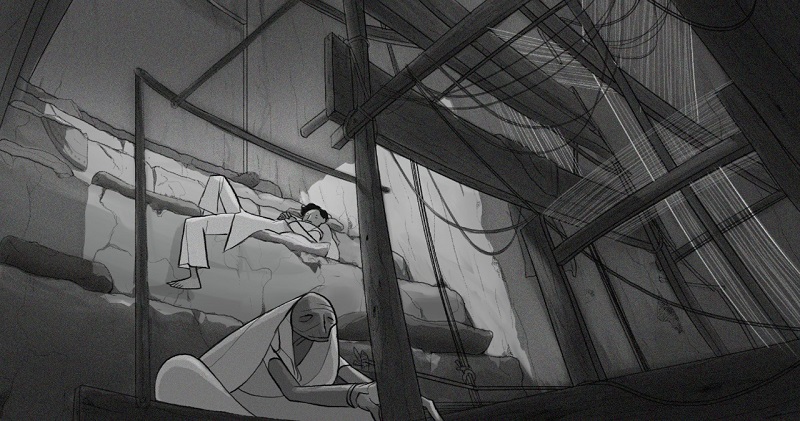
Upmanyu, can you take us a little through the process of animation – from ideation to execution?
Bhattacharyya: There’s just a lot of thinking, sketchbook work, a lot of typing and writing in notebooks involved. It goes back and forth between very rough drawings and after many weeks, I have a nice image to look at. It’s not a behind-the-scenes work happening here. We’re focusing on the script, to bring alive the vision. There’s also a lot of discussion with producers and anyone who comes on board to figure out what they think – to what they’re responding to, what they’re not responding to. Animators, concept artists, writers everybody’s inputs eventually go into the whole of the film. Feedback has to be given to a lot of the people working as they’re aren’t telepaths so they constantly are reminded of the vision. Then there are the standard processes of concept drawing, character designs and so on.
What were the challenges that you faced? Or what were the goals that you wanted to achieve with this Annecy Residency program?
Baché: For this first edition that we observed a lot, took advice and built our little project. So that this residency will aim to satisfy the artistic expectation as much as possible. We still have two months to go as per the contract but we will keep in touch and find a way to support the project through our festival and the MIFA.
India also has a talent pool of 2D animation artists who are doing a lot of beautiful work. Can we see Annecy collaborating with them in the near future?
Baché: Of course we are open internationally and will be happy to receive projects from India and to go have a look at them. And hopefully, if we can have a new director from India inviting in the Residency Program.

